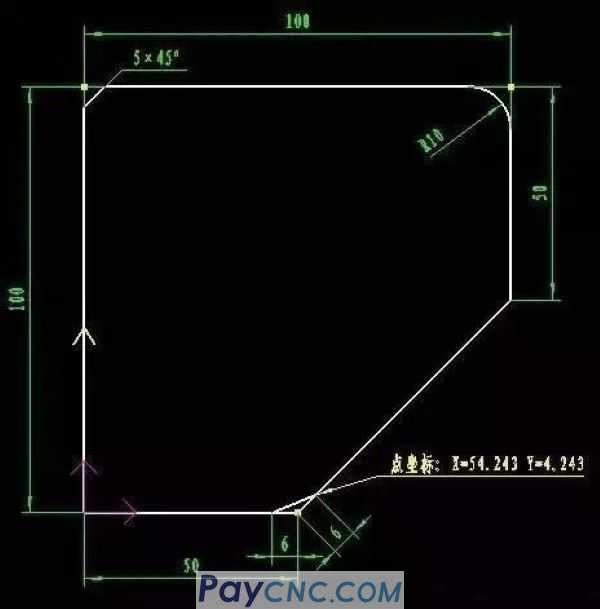How to use chamfer command to simplify programming
Refer to FANUC programming manual, chamfering and corner arc transition blocks can be automatically inserted between the following blocks
Between linear interpolation and linear interpolation block
Between linear interpolation and circular interpolation blocks
Between circular interpolation and linear interpolation block
Between circular interpolation and circular interpolation block
The following is the chamfering or rounding format between straight line segments:
G1X_Y_, C_; Chamfer command format
G1X_Y_,R_; Rounding instruction format
The meaning of the above instruction is: when there is a round or chamfer between two adjacent straight sections, you can program without chamfering or rounded corners during programming. The first straight line only needs to be programmed to the point of intersection and in the first section Add C_or, R_ at the end of the program, and the second straight line is still programmed as it is.
Advantages: the original straight line + fillet or chamfer + straight line three instructions
Now straight line (add C_ or, R_ at the end) + straight line two instructions
The following example illustrates:

Milling machine chamfer command
Set the origin of the coordinate system at the lower left corner of the path, and the tool has stopped at the origin, and move the tool clockwise.
Program without chamfering function (eight lines)
G1X0Y95F1000
X5Y100
X90
G2X100Y90R10
G1Y50
X54.243Y4.243
X44Y0
X0
Use chamfer command programming (five lines)
G1X0Y100,C5
X100,R10
G1Y50
X50Y0 ,C6
X0
It can be seen that after using the chamfering command in the corresponding chamfering and rounding places, the program is simplified by three lines. Not only can reduce the workload, but also reduce the chance of error.
|
 |
| Products Catalogue | Home | About Us | Retrofit | Download | News | Tech Support | Contact Us | |
|
|
|
